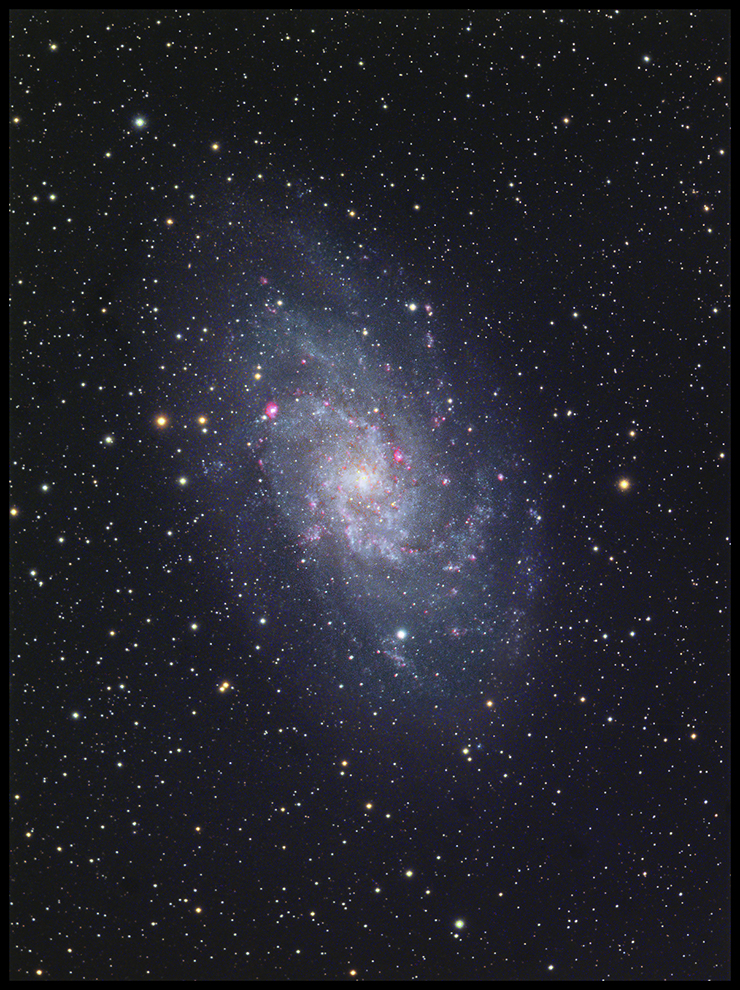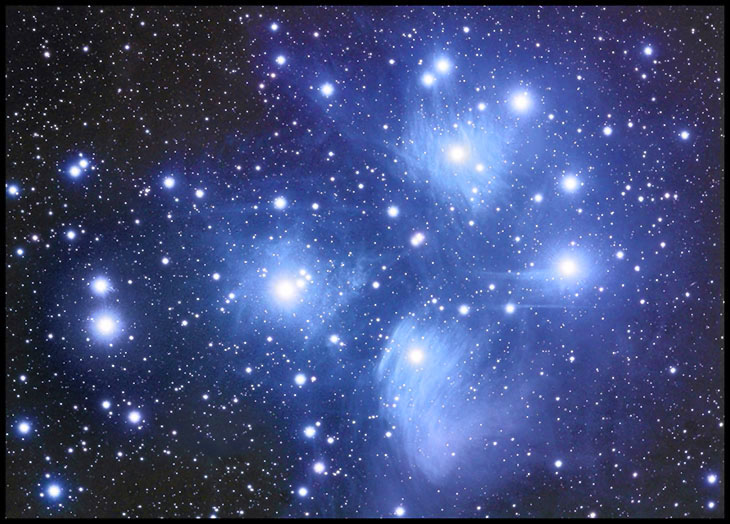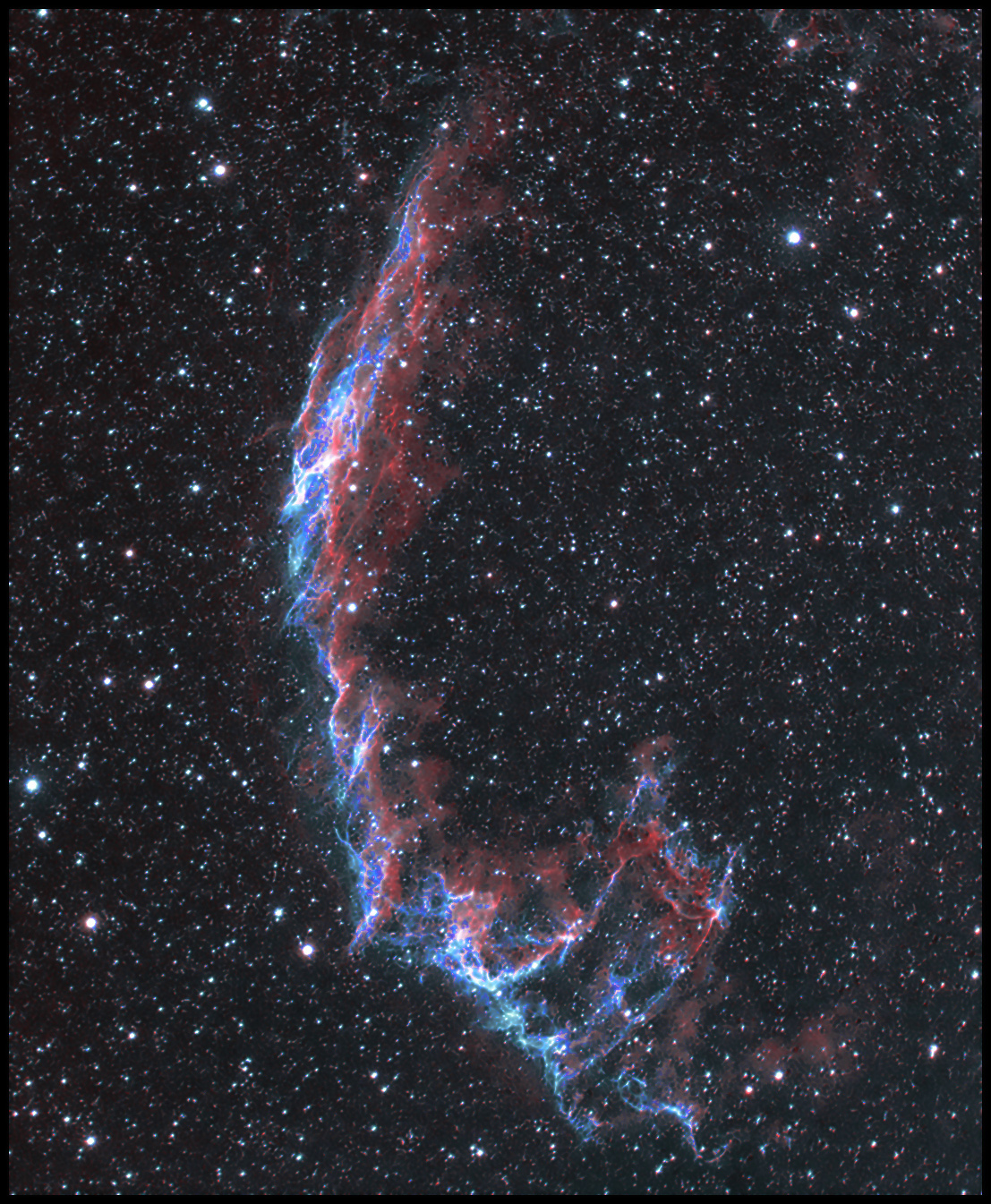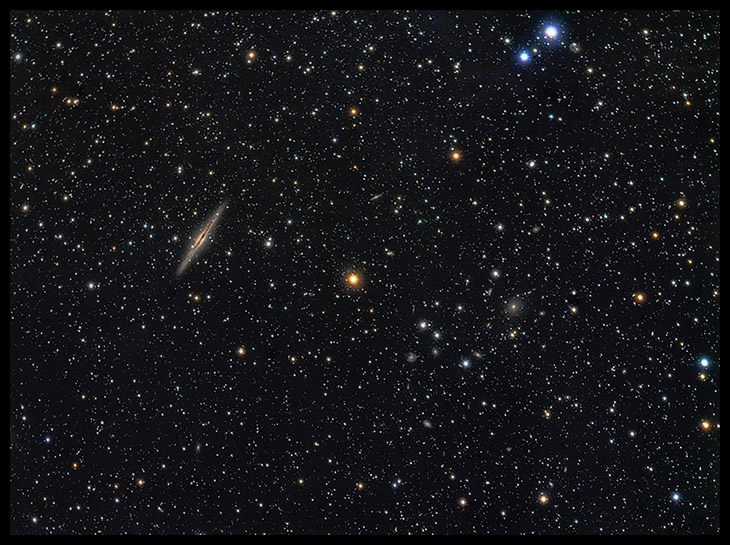Two Good Nights!
11/06/2016. Two clear nights in a row have let me try some ambitious stuff. M33 with star-forming regions highlighted, a deep Pleiades, a bicolor eastern Veil, NGC 891 with a swarm of more distant galaxies. And a good start on setting up some kind of orientation scheme on a couple of telescopes. Here's the take.
First M33 with an hour of hydrogen-alpha data layered in:

The Pleiades, as the CCD sees them:

M45
2h45m Luminance plus 10m each R, G, and B.
If you want that streaky detail within the dust and gas, don't try to cheat the luminance channel. Trying to combine L and blue channels for use as a kind of enhanced luminance layer sounds like a good idea. It results in brighter values within the nebulae but less defined structure. Now, here's the question: is that really any better than the 6D version a few nights back?

NGC 6992, the Eastern Veil
8 x 900s in H-a + 7 x 900s in Oiii
Click it, more clickables to come.
Two hours in hydrogen-alpha mapped to red and almost two in doubly ionized oxygen mapped to blue. I mapped the average of the two to green. I also shot an hour's worth of RGB for star colors and missing hues, but I have not yet used those images.

NGC 891 & Friends
43x 300s L +
6x300s RGB
Behind the TMB92, the field is wide enough to include a swarm of galaxies opposite that bright orange star from NGC 891. The stars range from a few dozens of light-years to a few thousand. The big galaxy at left is 40 million light-years away. The swarm at right is more like 240 million. This one you need to enlarge to make better sense of, but I've not got the larger version ready for show and tell yet.
My deep-sky photos are made with a variety of sensors and optics. Deepest images usually come from a SBIG ST2000XM CCD behind a 10-inch Astro-Tech Ritchey-Chretien carried on an Astro-Physics Mach1GTO. The CCD is equipped with a CFW-10 loaded with Baader wide- and narrow-band filters. Camera control and guiding are handled by Maxim DL 5.12. A Canon 6D and a modded 50D find themselves mounted behind an Orion 10" F4 Newtonian or a 92mm Thomas Back refractor or a tiny but mighty AT65EDQ refractor, sometimes with Backyard EOS in control and PHD Guide keeping things on target. Really widefield photos are often made using the 6D and various camera lenses and an iOptron Skytracker mount. PixInsight does most of the heavy lifting in post-processing — alignment, stacking, gradient removal, noise-reduction, transfer function modification, color calibration, and deconvolution. Photoshop along with Focus Magic and a handful of other plugins get their licks in, too, especially when polishing for the web.
:: top ::